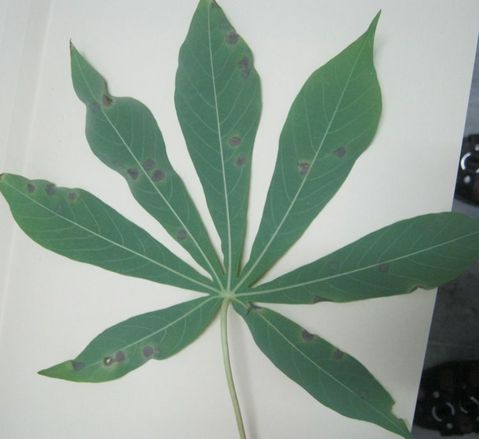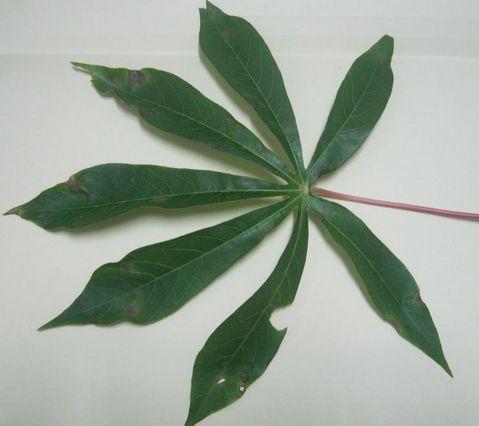Pests > Pests Entities > Fungi > Cercosporidium, PNG
Pests Pests Entities Fungi Cercosporidium, PNG
|
|
 |
 |
| October 2010. Leaf spots on cassava leaves from PNG. The problem became common after a short period of rain following a prolong dry spell. The spots are widespread on mature leaves.
It was thought to be Cercosporidium henningsii. Spots of C. henningsii tend to be quite angular, although is not clear from the photos. The spores are septate, needle-shaped, pale conidia, attached to dark conidiophores that are usually in groups or clusters. There is usually no need to control this disease, although it was reported from Cambodia that heavy rains this year had increased the damage it causes. If control were needed, collect the leaves and debris, and use copper sprays.
Another member wrote that the images do not look typical of the angular spots caused by a xanthomonad (e.g., the species that causes bacterial blight of cassava). This possibility can be excluded by cutting out a 1-2 mm portion of leaf from the edge of a lesion, mounting in water and looking for bacterial ooze. To observe the ooze place a coverslip over the drop and look at it through a microscope. Very often ooze is visible as a milky cloudiness without need for microscopy. This may take 5-10 min to appear depending on the freshness of the sample.
Dried ooze of the bacterial blight pathogen is often visible on the under surface of the leaf as exudation scales.
|
|
|
